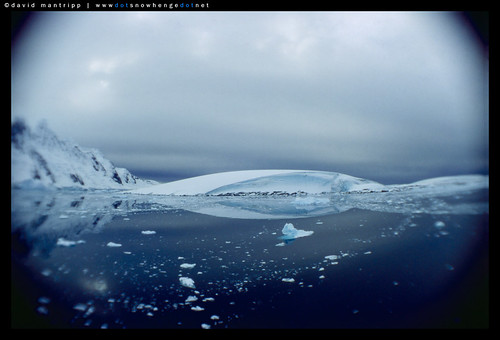I received some very nice feedback from Bruce Percy about the post I wrote about his latest book, Iceland, A Journal of Nocturnes. He was particularly taken by my observation that it seemed that Iceland was the stage, not the scene, for his photography.
What I meant by that is that the photographs in his book, in particular those of the black sand beach, work at several levels, and the dominant one, for me, is not the purely pictorial. By concentrating on a very limited, but infinitely variable, subject matter, and imposing further constraints such as low, winter light and film as a recording medium, he removes distractions and sets the stage for a very personal narrative. He communicates using shape, form and especially a very personal colour palette, rather than words, but a strong message emerges, conveying a degree of serenity but at the same time inner conflict, uncertainty and doubt. The positive wins over, but there is a strong tension there, and while the photography is undeniably beautiful, it isn’t blandly pretty.
And all this led me on to another train of thought altogether, which is going to twist this article into a rather more introspective thread. It occurred to me on reading Bruce’s feedback that perhaps my “review” itself was working on more than one level. Superficially, it’s talking about Bruce’s book, but at the same time it’s revealing something about the way I tend to conceal myself with misdirection and obscure, convoluted references. Maybe I’m actually obliquely referring to my own approach to photography, which is far less defined, or indeed accomplished, than Bruce’s, but when I think about it, reveals more than I imagined.
This started out with the observation that Bruce’s landscape photography very rarely includes any kind of human element - there’s not much crossover with his equally excellent travel portraiture portfolio. One exception is his work some years back on Torness nuclear power station, which actually first brought him to my attention. In my case, maybe the photography that I have an emotional investment in is precisely what I call the “human landscape”. Of the several sets of photos from Iceland I’ve published here, the one which feels most personal is exactly the one entitled “Iceland - the Human Landscape”.
These human landscape photos of mine are static. There are no people in them, just traces of where people have been. They usually record abandonment in some form or another, or isolation, or both, and the direction is firmly towards the past. I guess a psychoanalyst would have a field day with that - and rightly so. My other landscapes are perhaps sometimes reasonably accomplished, but I think they’re fairly sterile, like a great deal of landscape photography. I’m very fond of the long exposure rocks and water stuff, although in my defence I could plead that there’s an abundance of that sort of subject pretty much on my doorstep, so it would be perverse to avoid it. I do try to avoid the overblown Velvia look, and not to go overboard with the autumn leaves strewn over mossy rock stuff (although sometimes temptation is hard to resist).
There is more to this than just photography. Many years ago, during my two sojourns in Antarctica, although the nature and landscape was overwhelming, what really captivated me where the traces of the attempts of people to colonise, if only briefly, this utterly inhospitable landscape. Places like Deception Island, Port Lockroy, and much further South, Druzhnaya 2 (probably now completely vanished). It was the same in Svalbard, where I found myself as much if not more fascinated by places like Pyramiden, or the much less accessible Grumant (therefore more appealing), than glaciers and polar bears.
Back to the present, and much closer to home, I’ve recently spent a lot of borrowed time on a couple of projects exploring the woods near where I work. I’ve already published one of these here (The Pipe). The next, probably called “The Beaten Track”, is in progress, and required quite a lot more scrambling around, some of it verging on perilous. Both of these, especially the latter, once again centre around decaying signs of past human activity.
Strange device half buried in snow, Druzhnaya 2, Ronne Ice Shelf, Antarctica 1988
The “Texas Bar”, Liefdefjorden, Svalbard, 2010
Vanishing point, Camorino, Switzerland, 2012
The more I think about it, the more the subconscious drivers become clear. By building up an imaginary narrative around ambiguous signs of the past, I’m trying to build a past for myself, something that I can take root it. Due to a somewhat nomadic childhood, growing up in a confused state between several cultural frameworks, I don’t really have anyplace I can really call “home”. Whenever people ask me “so where in England are you from ?”, I have no answer. I’m not really from anywhere, and this has always led me to feel unsettled and to some extent insecure. So, it seems that this desire to belong is somehow expressing itself through my photography. Not necessarily my best photography in any aesthetic sense, but my best in the sense that it actually means something. So perhaps that’s why I’m so into photography - it gives me a stage to create an imaginary past on.
Well, why not ?










